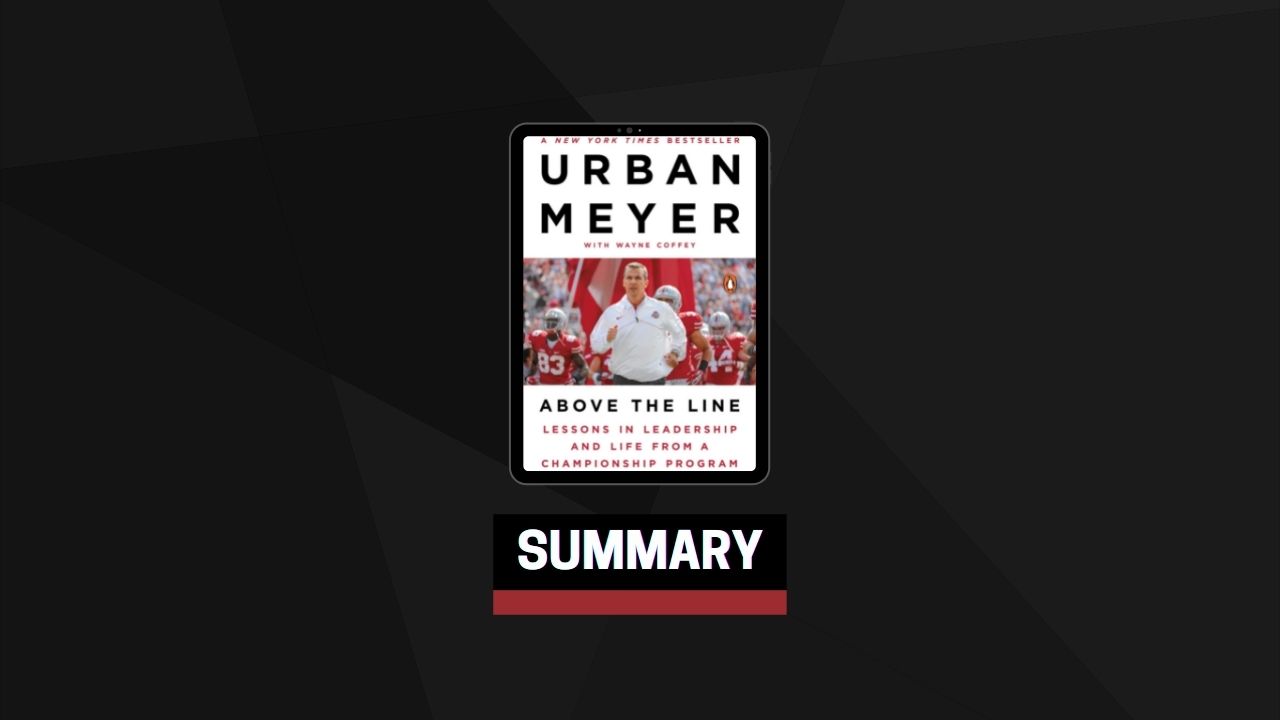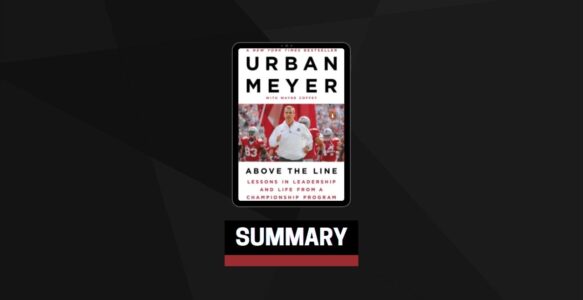Kindle | Hardcover | Audiobook
The Foundation
Every day is a battle for how you will live your life: Above the Line or Below the Line.
Above the Line behavior is intentional, on purpose, and skillful. Below the Line behavior is impulsive, on autopilot, and resistant.
Getting and staying Above the Line is the foundation for success in anything you do. It does not come naturally. It must be taught and learned.
The best outcomes are the result of getting and staying Above the Line. The people and teams who consistently produce exceptional results are those who have trained themselves to perform intentionally, on purpose, and skillfully when it matters most.
Beware of BCD: blame, complain, defend. BCD has never solved a problem, achieved a goal, or improved a relationship. Stop wasting your time and energy on something that will never help you. Ruthlessly eliminate BCD from your life.
It starts with leadership. If you want the people on your team to perform Above the Line, then you must lead Above the Line.
The R Factor
E + R = O
Event + Response = Outcome
Success is not determined by the situations you experience. Success is determined by how you manage the R.
The R Factor disciplines are the essential skills for getting and staying Above the Line.
There are six disciplines:
R:1 Press pause
R:2 Get your mind right
R:3 Step up
R:4 Adjust and adapt
R:5 Make a difference
R:6 Build skill
Embrace productive discomfort. Discomfort marks the place where the old way meets the new way. Push through the pain. If it doesn’t challenge you, it will not change you
Creating a Culture
Leaders create culture. Culture drives behavior. Behavior produces results.
The power of culture lies in its ability to engage hearts and minds, align effort, and energize the behavior called for by your strategy.
Nothing affects daily execution more powerfully than culture.
The behavior of your people is a reflection of the culture you create.
Every organization has a culture either by design or by default.
Winning behavior will not thrive in a culture that does not support it.
Relentless Effort
The foundation of our success is relentless effort. We go four to six seconds, point A to point B, as hard as we can.
Elite is not about how talented you are. It is about how tough you are.
Success is cumulative and progressive. So is failure. It is the result of what you do every day.
Relentless effort (not talent or intelligence) is the key to achieving great things in your life.
If you want to win in the future, you must win the grind today.
Competitive Excellence
You will play like you practice. You can’t practice on autopilot and play with purpose. How you compete in practice will determine how you compete in games.
Elite performance requires elite preparation.
Developing skill requires lots of reps. Physical and mental reps. Every rep counts.
Power of the Unit
Unit cohesion is the bond, the deep interpersonal connection, created among the members of the unit.
Soldiers fight for each other.
People do not experience your intentions; they experience your behavior.
Trust is built when people have repeated experience of your behavior in three areas:
- Character
- Competence
- Connection
The strength of a team is determined by the strength of the connections on the team.
High levels of performance require deep levels of trust.
There is no more powerful force than a group of men who share an uncommon commitment to each other and to achieving their mission.
The Necessity of Alignment
In order to achieve elite performance, alignment is essential.
An aligned organization gets things done faster and with better results, and is more agile and responsive to the competitive environment.
Achieving alignment requires effective leadership. Avoid the extremes of command and control and leniency. Find the balance.
Bring in people who believe in what you are doing and will help you make it better.
Hold everyone accountable. If someone is out of alignment, deal with it quickly and decisively.
The 10-80-10 Principle
Every team or organization consists of three groups:
The top 10 percent: disciplined, driven, self-motivated, want to be great, and work relentlessly.
The 80 percent: the majority—those who do a good job and are relatively reliable.
The bottom 10 percent: disinterested and defiant.
The key to success is moving as many of the 80 percenters into the top 10 percent as you can.
Time is a limited resource. Stop wasting it trying to motivate the bottom 10 percent.
Here are four approaches to move the 80 percenters into the top 10 percent:
Mastery and belief: remind them of the quality of leadership; let them know they are being taught by masters of their craft.
Harness the power of the elite: everybody wants to be around the top 10 percenters. Use them to motivate the 80 percenters.
Ownership: the more sense of ownership you can instill in your people, the more motivated they will be to push into the top 10 percent.
Positive peer pressure: everybody is pushing each other to get better.
Think Like a Leader
Invest the time to think. Make it a priority. Leaders think deeply, originally, and often, bravely.
When things aren’t going right, the most important thing you can do is slow down, go deep, and figure out why.
Encourage your people to bring new ideas to you. And when they do, listen.
Exceptional leaders think about common things in an uncommon way.
The Power of Belief
The highest levels of performance are empowered by the deepest levels of belief.
Belief creates vision. It sees the invisible. It sees the goal and the pathway that are required to accomplish the goal.
Belief creates strength of will. It animates the ability to respond to any situation with extraordinary toughness, tenacity, and perseverance.
Belief creates resilience, the ability to respond and bounce back from adversity.
Belief ignites and activates. It gives you full access to your talents and abilities.
Under competitive pressure, strong belief will pull your performance up; weak belief will pull it down.
Belief is not simply about individual performance. It is an essential element of exceptional team performance. Shared belief empowers a team to operate at full capacity.



